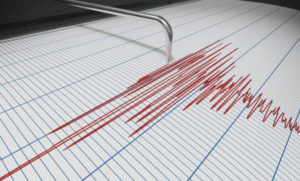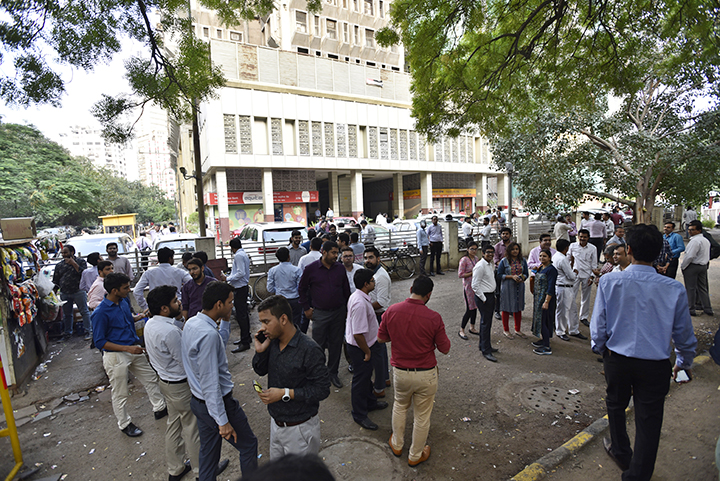Delhi seems blissfully unaware of the potential danger that earthquakes can pose even when it is located in seismic zone IV. What if an earthquake of 6 magnitude hits Delhi next?
The Covid-19 pandemic is slowly gripping Delhi with rising numbers of infection cases. The fight against this crisis is on, but amidst all this Delhi has seen more than 14 low intensity earthquakes in the last two months and one medium intensity quake with magnitude of 4.5, the epicenter of which was at Rohtak.
Here’s a list of all recorded earthquakes: April 12 – Delhi (3.5); April 13-Delhi (2.7); April 16 – Delhi (2); May 3 – Delhi (3); May 6 – Faridabad (2.3), May 10 – Delhi (3.4); May 15 – Delhi (2.2), May 28 – Faridabad (2.5); May 29 – Rohtak (4.5 and 2.9); June 1 – Rohtak (1.8 and 3) ,June 3 – Faridabad (3.2),and June 7-Rohtak(1.8 and 2.1).
This unusual frequency led to speculation that these low intensity tremors are a prelude to high intensity earthquakes. Experts, however, denied any immediate possibility of a high intensity earthquake. The collision of the Indian plate with Eurasian plate is the major reason for seismicity in north India and the Himalayas. Scientists view the recent earthquakes as “release of stress” created by movement of these tectonic plates. It does not indicate that a major earthquake would follow.
Nevertheless, Delhi has a peculiar tectonic map with fault lines running through the Delhi-Haridwar ridge, the Aravalli-Delhi fold, Sohna, Mathura and Moradabad, that generate local causes for earthquakes to occur.
Due to its geographic location, Delhi is therefore affected by earthquakes of local origin as well as Himalayan origin.
Speaking to IANS, Dr AK Shukla, former Head of Earthquake Risk Evaluation Centre of Indian Metrology Department said, “One of the reasons for increasing numbers of tremors hitting Delhi is that the local fault system here is quite active. Such fault systems around Delhi are capable of producing an earthquake of magnitude around 6 to 6.5″.
Delhi has a history of earthquakes. L. S. Srivastava, and J. G Somayajulu (1966) in their research mentioned three major earthquakes — Khurja earthquake on 10 October 1956 of 6.7 magnitude in which 23 persons were killed in Bulandshahr and some injured in Delhi, magnitude 6.0 earthquake of 27 August 1960 near Delhi that left around 50 persons in Delhi injured; and an earthquake near Moradabad on 15 August 1966 that caused 14 casualties in Delhi.
Vineet Gahalaut, the former director of National Centre for Seismology also points to some statistics. He said Delhi has seen major earthquakes in the past that originated in Himalayan region. “In 1803, an earthquake occurred with epicentre near Srinagar or Devprayag, it damaged the Qutub Minar. We cannot predict the earthquake but by looking at historical records, (the possibility of) a big earthquake can not be refuted.”
As per Bureau of India Standards, Delhi has fairly high seismicity as it is located in Zone IV.
Geological conditions like depth of alluvial plain determine the magnitude of the risk. Delhi Disaster Management Plan 2015 talks about such risks. It says, “Impact of earthquakes in Delhi may compound the expected colossal damage due to liquefaction, physical location and hydrogeology (combination of geology and groundwater) details. There is a severe threat of liquefaction along the river Yamuna areas covering northeast, east and some part of North West district.” Liquefaction means that soil loses its strength.
It further says: “The Naraina-Patel Road section and the Yamuna Riverbed section, extending till Noida and Faridabad, are more vulnerable to damage even by a moderate earthquake because they are on alluvial soil up to 200 metres deep. These regions face a very grave problem of soil liquefaction during an earthquake. Moreover, earthquakes are amplified by alluvial soils. The Ridge is comparatively safe as it has a rocky base.”

Gahalaut mentions the 1985 earthquake that killed more than 10,000 people. The epicentre of this quake was well off the Pacific coast of Michoacán, more than 200 miles west of Mexico City but since the city is constructed on lake bed, that “amplified the earthquake” and damaged the city more. “Cities like Kanpur, Varanasi, Prayagraj are built on the thick alluvial soil of the Ganga and Yamuna floodplain. If a big earthquake occurs in the Himalayas, it can damage these cities as well,” he says.
Last year, Gopalkrishna Gandhi wrote an article for Dainik Jagran, in which he talked about the looming threat of earthquakes along with pollution. He said Delhi comes under high-risk Zone 4 and if an earthquake of high intensity destroys this city, kills people, wouldn’t they question the administration and the government that they were not informed about the risk in which they happened to live?
Delhi seems blissfully unaware of the potential danger that earthquakes can pose. Many buildings do not follow BIS norms, various localities in north, north-east, south, and east Delhi districts are small, densely populated and close knit. That increases the vulnerability to the risk.
Gahalaut says though major structure of the city followed the code but when it comes to houses, defiance of norms and code is a big problem as nobody cares about rules. “The map of buildings gets approved so easily, I don’t know how. The implementation of seismic zoning code is pathetic too,” he says.
Delhi needs to reduce the population density and create an earthquake resilient city. That requires sharing of Delhi’s burden.
As in South Africa, Gandhi said Pretoria is the administrative capital, Cape Town is the legislative centre and Bloemfontein judicial capital of the country. Why can’t the government think of such a plan in India? He mentions cities like Amravati, Jaipur and also cities of north-eastern states which can potentially be capital cities and can share the burden of Delhi.
The historical city of Delhi reels under the looming danger of earthquakes and pollution. It requires a sigh of relief, Gandhi argues, “even when government institutions are shifted to other cities, it would not affect the importance of Delhi.” In fact shifting of government offices would be beneficial for Indian democracy and give Delhi a chance to replan itself.
Unfortunately, the government has still no such plan. Government is planning on redeveloping the Central Vista at an estimated cost of Rs 20,000 crore. Obviously, the government is in the mood to keep burdening Delhi even more.
(Cover: Many buildings in Delhi do not follow BIS norms, which increases the vulnerability to the risk)





